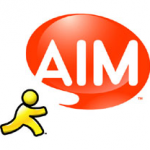The one-to-many form of journalism, formally known as microblogging has been taking the world by storm since the invention of Twitter in 2006.

The phenomenon allows users to maintain a constant connection with others without a direct communication tool like phone or e-mail.
If you don’t tweet, you may be wondering why Twitter is such an effective tool for journalists. It allows them to both link articles and network with other journalists, but what else can it do? Here are a few examples of why Twitter is imperative to the success of any writer:
- Allows readers and tweeters to get real time updates when natural disasters occur
- When the San Diego wildfires occured, residents were able to find information about road closures and fire lines through Twitter.
- Enables reporters to become a part of an open journalistic culture
- Reporters are able to share their leads with fellow journalists, allowing for more collaborative stories
- Writers are able to send and receive breaking news
- Millions of people around the world, including myself, heard news of Murabak’s defeat after it broke on Twitter.
After seeing how useful Twitter is, I bet you are bursting at the seams to make one yourself. Here are some things you need to know to be an effective tweeter:
- You can post, read, reply, and direct message
- You can build a network by using twitters search feed
- Once you find somebody to follow, they will likely follow you. After they follow you, they may tell their friends to follow you, thereby expanding your follower base.
- You should tweet about what you’re reading, what you’re thinking, what you’re doing later, what you are enjoying on twitter, or what questions and/or answers you may have for those you follow or those who follow you

Twitter Timeline
For more information on how to use Twitter, watch this video.
Twitter, which has previously been seen as a glorified status update, truly is a watering hole for good information. By harnessing the power of Twitter, you as a journalist will have access to more information than you could ever find on your own. If you effectively use Twitter, you like so many others will also be able to “get recognition. You will also be able to build a reputation for yourself and get ahead.” So now that you’ve been introduced to the wonderful world of Twitter, what are you going to Tweet about?
For clarification on any material in this post, or if you’d like to learn more about this blogger, tweet @GvonZiel927 or visit this link.
Posted in Briggs "Journalism Next" Chapter Reviews Tagged: Chapter four; Twitter; microblogging; network; live web February 14, 2011
So you want to be a journalist after you graduate? The most important step you can take to achieve this goal is to create a blog today.
You’re worried you don’t know how to use a blog? You don’t have the HTML or CSS experience nor the loyal audience to make your blog successful? You don’t know what to blog about? Never fear, dear reader, Mark Briggs offers a crash course on blogging in his book “Journalism Next.”
The first thing you need to know, in starting your blog, is the language:
- Post: an entry on your blog
- Vlog: video blog post
- Permalink: link that gives direct access to a specific post
- Moblog: blogging from a cell phone or smart phone
- Trackback: enables blogger’s to let each other know when they are linking to each other’s material
- Blogroll: links to websites the author visits


After learning the language, you should think about what you want to blog about and choose a blog system. Two of the most popular systems include Blogspot and WordPress.


Next, you should customize your blog layout. You can do this by using the tools your blog services provide. Some of features WordPress provides include: page elements, fonts and colors, HTML editing, and CSS editing.
For more information on how to use WordPress, visit this tutorial.
After you’ve finished customization, you need to build an audience for your blog. In order to do this, you should
- Recognize what the audience whats to read
- Organize your thoughts coherently
- Use succinct writing
- Present yourself in an authoritative manner
- Use bullets, bold text, and subtext to increase scanability
- Have specific, relevant headlines
- Use graphics
The last three things you need to do in order to be a successful blogger, are:
- Allow audience comments and “embrace them as a valuable reporting tool.”
- Use RSS feeds as a source for blogging material
- Read, comment, and link to other blogs. By linking to other bloggers, they will likely begin to link to you as well.
Once you follow these simple steps, and take head of Briggs advice, you will quickly be on your way to a successful career in the blogosphere! Good luck, fellow journalists!
Posted in Briggs "Journalism Next" Chapter Reviews Tagged: Blogger, Chapter two, Community February 14, 2011
The “iron curtain” that has separated journalists from the people for so many years has finally fallen, giving way to crowd-powered collaboration. Journalists are finally beginning to realize that their audiences can “add value to their information by processing it –digesting it , organizing it, making it usable.”
In this post, we will examine the three methods journalists use to get information from their readers.
1 .Crowdsourcing
When using this method of journalism, reporters ask the readers to add information to improve their service or information base. One of the best examples of crowd sourcing can be seen in Wikipedia, the online encyclopedia, that allows anyone with a computer to add and edit information. Crowd sourcing is important because writers are able to find large amounts of information relating to a specific topic, much quicker than they would be able to if they were working alone. Crowd sourcing has effectively been used to “find instances of voting problems, tracking local distributions of disaster payments from the federal government and to map pot holes on city streets.”


2. Open-source reporting
This method of journalism is used when new organizations disclose their story ideas before they are published. In doing this, the organization “invites readers to help report the story.” By doing this, reporters are able to increase both their credibility and social capital.
3. Pro-am journalism
When using pro-am journalism, professional writers take a step back and allow their readers to publish their own material. This do it yourself method allows readers to provide writers with story ideas and details that they can then research and expand on. One of the most well known examples of pro-am journalism is CNN’s iReport. Publishers “can learn something about how they cover a community by paying attention to what kind of news people are submitting to them–and what people are reading online.”

Although some fear that citizen journalists cannot produce publishable works, they are far outnumbered by the amount of people who disagree.There may be some bad apples in the barrel that is our audience, but that will not prevent collaborative publishing from continuing on. If we continue to work with our audiences on stories, we as journalists will be able to create the most detailed, most credible, and most appealing articles possible.
Posted in Briggs "Journalism Next" Chapter Reviews Tagged: Chapter three, Crowdsourcing, Open-source reporting, Pro-am journalism February 14, 2011
You will have “the chance to be part of something bigger and better than it’s ever been before.”
As scary as it seems, the future of journalism is now. Hundreds of journalists, from novices to experts, fear for their future in the industry and feel that the media, especially print media is a dying breed. Mark Briggs, author of “Journalism Next,” disagrees with this popular notion and offers some reassurance to all of us who fear for how we will make a living in this age of new media.

to join the New Media movement
He encourages us by explaining that this is not the first time that journalism has gone through a revolution. He also assures us that we will be able to have more creative control in this age of new media. This is the age for:
- “independent trailblazers”
- Bottom up journalism (hyper local journalism: Patch.com)
- Innovation, evolution, and hustle
- People who are not afraid of experimentation
Although it is extremely easy to get lost in the popular belief that the press is slowly but surely fading away to nothing but distant memory, it is important that we ignore that notion. As journalists, we live in an exciting time and are being presented with a extreme, but rewarding challenge. I willingly accept this challenge of adapting to new media, and I hope that my fellow journalists, and you as a reader, will too.
Posted in Briggs "Journalism Next" Chapter Reviews Tagged: Hyperlocal journalism, Introduction chapter, New media February 9, 2011
“We are all web workers now”– Mark Briggs
This means that it is imperative for us to understand:
- The concept of bytes, or a unit for digital measurement
- The difference between the web, which is a way of accessing information through a network, and the internet, which uses applications like e-mail and instant messaging

- File Transfer Protocol (FTP), process in which computer processes large files that e-mail can’t handle
- HTML, or a collection of tags that tell the computer how to display a Web page
- CSS, or style sheets that add personality and visual appeal to a Web page
- XML, or a system of tags that describe what data is
By beginning to understand the preceding concepts, and letting go of past media forms, journalists of yesterday, today, and tomorrow will be able to adapt and thrive in the web-based media world of Twitter, Facebook, and blogs.
For a better understanding of the concepts discussed in this post, visit:
Posted in Briggs "Journalism Next" Chapter Reviews Tagged: Bytes, Chapter one, CSS, FTP, HTML, Internet, Web, XML February 9, 2011
In the age of new media, when there are so many different options as to how to get one can acquire information, it is important to recognize one’s own personal “media pyramid.”
Although my pyramid is constantly evolving, I can’t deny that my main source of news information comes from:
- Emails from my family and friends
In thinking about one’s media pyramid, a potential journalist will realize that he or she perhaps needs to begin going to more legitimate news sources more than he or she maybe had in the past. If a journalist is ill-informed about world affairs that matter to the general public, how can her or she be expected to deliver articles that his or her audience will want to read?
Posted in Individual Tech Blog Items Tagged: Media Pyramid, Media sources, Tech Blog 1 January 26, 2011
Next Posts











